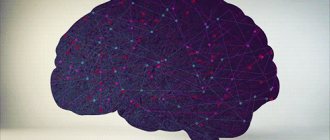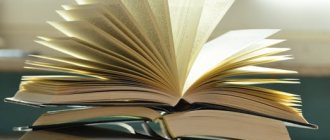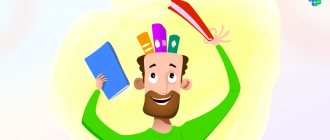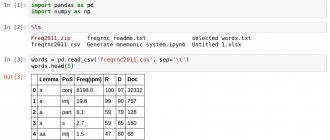Everyone can read faster and remember more. But how to do that? Let's talk.
Would you like to read a lot without making much effort? Do you want to learn how to read and remember what you read very quickly?
Most people think that reading quickly is difficult, but in fact it is a skill that anyone can master. You just need to use the right set of exercises and tools to master it.
With a little practice, you will understand how easy it is to read dozens of pages in a few minutes. In this article we will look at speed reading techniques. Using them, you are guaranteed to read faster!
Content
- How does the brain remember what it read?
- How do we forget
- How to Prepare for Reading
- How to read and remember information
- How to learn to read quickly
- How to remember numerical information
- What to do after reading
Even when we read fiction slowly, sometimes a paragraph slips out of our memory and we return to it. It is even more difficult to comprehend educational materials and remember important information.
Source: giphy.com
How does the brain remember what it read?
The brain's memory capacity is limited, and it has to evaluate the importance of incoming data, so it will not be possible to completely remember everything you read.
Most likely, you can easily describe the plot, characters and key scenes from books in the school curriculum, but have difficulty remembering what you read a few months ago. This is because at school the task was to memorize these works in order to get an excellent grade for a retelling or an essay.
The school curriculum is specially designed so that children can easily connect new knowledge with each other and consolidate it in practice. The principle of coherence also works for adults: the more often we compare new information with already known information, the better it is absorbed.
Creative associations
Few people know, but inventing them is an art. There are 5 “golden” rules that must be followed in order to easily remember any information:
- Don't think. Use the first image that comes to mind.
- Associations must have a strong emotional component.
- Imagine yourself as the main character (for example, if a lemon was on the table, try to “eat” it).
- Add absurdity.
- Make the resulting “picture” funny.
How it works? Let's say you're studying painting and want to remember what pointillism is. In short: this is one of the varieties of neo-impressionism, where the paintings consist of many bright dots of the correct shape (the founder is Georges-Pierre Seurat). What association can you come up with here? Imagine a ballerina who has smeared her pointe shoes with paint and, while dancing, leaves a picture of multi-colored dots on the stage. He moves on and accidentally touches a jar of yellow sulfur with his foot, which falls with a loud crash. Here are our associations: pointe shoes with bright spots are pointillism, and a container with sulfur is Georges-Pierre Seurat.
How do we forget
German psychologist Hermann Ebbinghaus studied how meaningless information, such as a series of syllables or numbers, is forgotten. An experiment with volunteers showed that after an hour people do not remember even half of the material, and after a month they forget up to 80%. For coherent ideas the percentage will be lower, but the dynamics of forgetting will remain.
Ebbinghaus Forgetting Curve
How to Prepare for Reading
Choose the right books
To avoid getting overwhelmed by the flow of information, make a personal reading list and choose books in which the text is simple and understandable. For example, if you want to study philosophy, you should not immediately buy the collected works of Hegel or Kant. Look for review literature, go to a bookstore, look through several collections on the same topic - compare the language and choose the book that will be more interesting and easier to read.
Decide on a goal
If you want to remember what you read and use it in the future, think about how and where you will apply your new knowledge. A specific goal will help you remember more.
Imagine that you have to read some material and then take a test. In preparation for the test, you will most likely simply learn the basic terms and wording. If you are going to teach someone what you have read, you will thoroughly study the topic, prepare clear and understandable examples, and think through answers to possible questions. These actions will help you better understand the text even when you read it for personal development.
Review the main parts of the book
Pre-reading will help consolidate the material you are about to tackle in your memory. Study the contents of the book, read the headings and a couple of random paragraphs. Get a picture of what you're about to dive into.
Source: giphy.com
We set clear goals
Even if you read very carefully and thoughtfully, after turning the page, you are unlikely to be able to retell in detail what you just learned about.
Back in the 19th century, the Yugoslav psychologist P. Radossavljevic conducted an interesting experiment. The task that the subject faced was to memorize nonsense syllables. This usually required several repetitions. Then the goal changed - now you just had to read what was written. The subject did this as many as 46 (!) times, but when the experimenter asked him to repeat the series by heart, he could not do it. But as soon as I realized that they needed to be learned, it only took 6 times to run my eyes over the syllables in order to accurately retell them. What does this mean?
To understand how to read, so that what you read is remembered, you must set a clear goal for yourself - to remember the material.
There are some tricks here too. The main goal needs to be broken down into more specialized tasks. Simply put, you choose what to focus on. In one case, it is enough to highlight the main facts, in another - their sequence, and in the third - to remember the text verbatim. Then, while reading, the brain will begin to create “hooks” that will help you remember the necessary information.
How to read and remember information
Make time to read
Read at least 30 minutes daily. It is important that nothing distracts you during this time. To avoid accidentally getting carried away and forgetting about important things, set a timer so you don’t have to check the time on your phone and be distracted by messages.
Take notes
If you are reading educational literature, do not let your thoughts flow freely. Notes structure the reading, help to record important ideas, identify unclear terms or controversial points in the text. Use marginalia—through headings, outlines of ideas, or comments in the margins.
Visualize and make associations
Present a vivid image to important details of the text and connect them into a chain. To practice, take a list of random words. For example: key, sewing machine, helicopter, hare, fire, wire.
The chain could be as follows: a huge key starts a sewing machine to produce a helicopter, the runners of which are held by a fearless hare, lighting a fire in the shape of a wire.
You can come up with any stories, even implausible ones. The main thing is that the interactions are emotional, the details are large, and the sequence of words is maintained.
Source: giphy.com
Draw mind maps
If you have a lot of time to remember what you read, highlight the main ideas and make a mind map from them - a diagram in which information is encoded by symbols that are connected to each other.
To create a mind map, you will need a horizontal sheet of A4 paper and several colored pens. It is better not to use graphic editors on a computer, but still draw by hand - this way the information will be better consolidated.
In the center of the sheet, write or draw the main idea and circle it. Then direct from the center as many semantic branches as there are large logical blocks in your mind map.
Code the topics and subtopics with symbols that make sense and circle each. Draw symbols from the same place, arranging the branches clockwise, so you know where to start reading the mind map. Choose bright symbols so that they are better remembered.
After finishing the drawing, make sure that everything is clear to you. Now the mind map needs to be voiced. Start with the main idea and move clockwise to the subtopics.
Then put the resulting drawing aside and draw another one from memory, and then compare the two images. Your task is to accurately repeat the original.
A drawing will help you reproduce a fragment of text in words. The first time, remember the content based on the mind map, and the second time, speak the encoded thought on your own without peeking.
Use cards
You can make cards yourself, purchase them at a bookstore, or create them using an app for your smartphone or desktop. On one side of the card write the factual information (1242) and on the other side what it means (Battle of the Ice). First, highlight the main information in the text, and then transfer it to cards and learn it. For more information on how to use cards, watch this video.
Retell
After reading a paragraph or chapter, be sure to recap what you remember and understand to determine how well you have understood the text. When we voice what we read in our own words, we use the most reliable method of repetition - active reproduction.
Recommendations for memory training
There are many methods and exercises for memory training in the world, almost all of them are effective. Let's look at the most popular of them, which have many positive reviews.
- During any mathematical calculation, you should put the calculator aside. By counting in your head or on paper and doing it regularly, a person increases your memory capacity significantly.
- Start your day by counting from 100 to 1. You need to count in this order and try to increase the speed every day.
- A fairly effective exercise is called “Cities in a Minute.” It's easy to do: in just one minute you need to name 60 cities, one city per second. You won’t be able to do this the first time, but by doing this task every day, you can notice positive results within a week.
- You can try learning new words. This technique will allow a person not only to train his memory, but also to learn a foreign language. Such exercises should be performed regularly, since just once the picture will not change, just like when training muscles. It is recommended to learn fifteen words a day and increase this barrier with each subsequent week.
- The simplest and most well-known exercise is considered to be the usual memorization of a poem. The important thing about this technique is its consistency, that is, you need to learn new poems systematically.
How to learn to read quickly
Reading with a curtain
This workout is suitable for adults and children. You will need a sheet of paper that you need to smoothly move down the page, covering line by line. Your task is to have time to read the line before it closes. Of course, you can't go back.
Reading with a pointer
This method is often used with children. Draw your pencil or finger under the line. The eyes should keep up with the movements of the hand. Make sure that the “pointer” does not stop or slow down, making the task easier.
Reading with a motor
To perform this exercise, cup your palms and leave your thumbs free. Start rotating your thumbs around each other to create a motor. While reading the text, turn on the engine and accelerate.
“Start-end” technique
This method is suitable for more advanced readers. The point is, armed with a pencil, put a period at the beginning and end of each line. Fix the points with your eyes, ignoring the rest of the line. As you train, your gaze will capture more and more nearby information. It is better to practice on narrow texts, such as in some textbooks and newspaper pages. The advantage of this technique is that it also develops peripheral vision.
Schulte tables
This exercise can be downloaded to your phone and practiced anywhere. The table is a square of 5x5 cells, in which numbers from 1 to 25 are located in a chaotic order. Your task is to find all the numbers in order as quickly as possible.
If you can handle a 5x5 square easily, try the 7x7 or 8x8 options. Then you can move on to color tables, where color is a distracting factor. The most difficult ones are the animated ones, when after each click on the screen the numbers are shuffled.
Pictogram method
Pictograms are a way of replacing words and sentences with pictures. You don't have to be an artist to do this. The simpler and funnier the pictures, the better. Children need visualization, interest, and involvement in the process. In this case, these aspects are best combined.
Methodology:
- Divide large text into parts. Work with a short story as a whole.
- Divide the board or piece of paper into two parts. On the left, write down the numbered sentences, each on a new line.
- Read the sentences, understand new words.
- Read each sentence separately, depicting it with the picture on the right. You can start by replacing individual words, gradually making the work more complex.
- Close the left side. Retell the text based on the pictures an unlimited number of times.
- Try a retelling without relying on pictures.
While getting acquainted with the game, draw pictures yourself. Then, gradually, you can involve children. This method is also suitable for adults if the material is presented in more or less simple language.
How to remember numerical information
To do this, we recommend learning the alphanumeric code (NLC) up to 100. The essence of the technique comes down to translating numbers into words. To carry out this translation, you need to select a letter for each number in a pair: 0 - N, 1 - K, 2 - L, 3 - T, 4 - H, 5 - P, 6 - Sh, 7 - S, 8 - V, 9 - D. Next, your task is to remember the letter that encodes the number, and to select a figurative word for the number that contains the letters of the encoded numbers. For example: 24 - LC (beam, face, lecho), 27 - LS (fox), 75 - SP (rescuer) and so on.
It's not easy, but once you master this tool, you'll find it easier to remember dates and other numbers. You can move away from the standard PBC and come up with your own images. For example, the number 2 looks like a swan, and the number 11 looks like ski poles. It turns out that the number 211 can be remembered as a swan running with ski poles.
What to do after reading
Put what you read into practice
In school, we remembered information from text not just because we knew we needed to use it. In class, we discussed the ideas of texts, wrote essays and reports, combined ideas from books with global themes, and gave our own interpretation.
So one of the best ways to remember what you read is to find opportunities to apply the information. Share your thoughts on the forum, write a short review of the book, and discuss it with someone who has not read it.
Source: baamboozle.com
Simplify
One effective way to remember something is to explain it in simple words. Ordinary conversational speech will help you truly understand the topic and not mask your thoughts with complex language. Organize your notes
When you put what you read into practice, you will most likely find that you didn’t remember everything. In this case, you will need the notes you left. Go back to your notes and go through them again. Make sure complex descriptions are simplified. Then organize everything into a short summary. What would you say about the book if you only had 30 seconds?
Repetition method
If you have very little time to study, and you need to quickly learn a text in English, you can use the technique of constant repetition.
Methodology:
- Write short excerpts from the story on sheets of paper. It is better to use bright markers in flashy colors.
- Hang them around the house: above the kitchen table, in the bathroom, on the mirror in the hallway, on the balcony.
- When you visit these places or just pass by, you will see: your eyes will be “hooked” on the sentences, and what you read will be stored in your memory.
Of course, the technique itself will not work, but as an addition to other methods it will give good results and speed up memorization.











